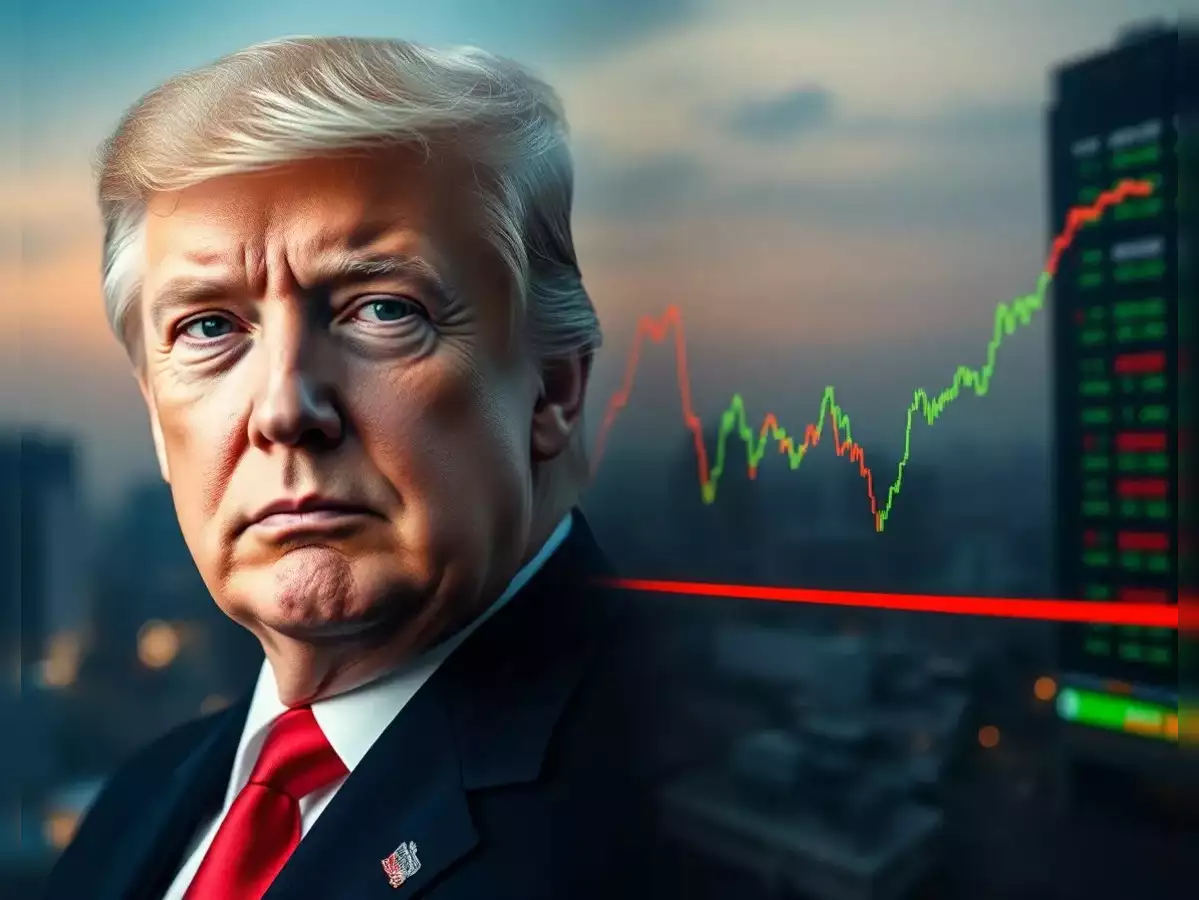Published
11 months agoon

If you thought the market jitters were behind us, think again. Indian equity indices have now recorded six consecutive days of losses, marking their longest losing streak since October 7. Both the NSE Nifty and the BSE Sensex are taking hits, with the Nifty closing down by 0.11% (or 26.35 points) at 23,532, and the Sensex dropping 0.14% (or 110.64 points) to close at 77,580. Since their highs on September 27, the Nifty and Sensex have dropped 10.1% and 9.3%, respectively. For investors hoping to find relief, experts warn: the worst may not be over yet.
According to analysts, there are hints the market might be oversold, but caution is the word of the day. There’s potential for a further drop of 300-400 points if Bank Nifty dips below its recent low. While Nifty has closed slightly below the crucial 200-Day Moving Average (DMA), the market will be watching closely to see if this breach develops into a more significant slide.
The Bank Nifty showed a slight uptick of 0.2%, closing at 50,179, though it briefly hit a low of 49,939 earlier in the day. However, while domestic investors continue to see opportunity, foreign investors remain in a selling mood. On Thursday alone, foreign portfolio investors (FPIs) offloaded ₹1,850 crore in shares. In contrast, domestic institutions were net buyers to the tune of ₹2,482 crore. This tug-of-war between FPIs and domestic investors illustrates the tension in the market, where enthusiasm is tempered by caution.
The market has officially entered what analysts term a “corrective phase,” where the Nifty and Sensex have each shed around 10% from their respective 52-week highs. It’s a telling sign of a sentiment shift, which some say is rooted in broader global dynamics and particularly, the “Trump factor.”
V K Vijayakumar, Chief Investment Strategist at Geojit Financial Services, shed light on this. “The Trump factor has triggered many profound changes in markets already. The dollar index is strong and rising, currently at 106.61, while the US 10-year bond yield sits at 4.48%. These two elements are significant headwinds for emerging markets like India.”

With Donald Trump re-elected as the 47th U.S. president, market watchers are already seeing signs of turbulence for emerging economies, including India.
Trump’s policy proposals—blanket tariffs, tighter immigration, and tax cuts—have injected a new wave of uncertainty, which on election day alone drove the U.S. Dollar Index up by a staggering 6%. For Indian markets, this stronger dollar and Trump’s promises of a “protectionist” approach could have far-reaching consequences.
In the days following Trump’s re-election, the dollar has surged, and unless it eases, experts warn that foreign selling is likely to persist. Emerging markets are particularly sensitive to the dollar’s strength, as a rising dollar often leads to capital outflows, weaker currencies, and challenges for economies reliant on foreign inflows.
Despite efforts by the Federal Reserve to steer the economy, Trump’s fiscal policy might add inflationary pressures.
The Fed recently lowered the federal funds rate to 4.50%-4.75%, following a more substantial cut in September. But these cuts have done little to lower the U.S. 10-year Treasury yield, which jumped by 70 bps after the September rate cut. This tells us that structural market factors, rather than Fed adjustments alone, are dictating the terms of U.S. interest rates. For emerging markets, the implications of high U.S. yields are sobering; they could spell sustained pressure on capital flows.
For India and other emerging economies, Trump’s return means navigating a rocky road. His stance on geopolitical issues, particularly in the Middle East and Eastern Europe, brings fresh volatility.
Investors will be keeping a close watch on how Trump’s foreign policies impact global stability, which, in turn, affects capital inflows into Indian equities. With these shifting dynamics, some investors may look at safer options back home in the U.S. or other developed markets.
Yet, not everyone believes the Trump factor is solely to blame.
Samir Arora, founder of Helios Capital, argues that foreign institutional investors (FIIs) are primarily selling off Indian stocks due to disappointing corporate earnings, not to move funds to U.S. or Chinese markets.
He points out that global investors typically hold only about 1% exposure in Indian equities versus around 60% in the U.S. market. “Given this low exposure, it’s unlikely that global investors are reducing their stakes here to add more to the U.S.,” he says.
Arora warns that weak earnings aren’t expected to improve immediately and could take six to nine months to stabilize. Despite Trump’s return and related geopolitical factors, he remains optimistic about India’s long-term outlook. “While we may underperform compared to U.S. markets, there’s no need for pessimism,” he advises.

Experts like V K Vijayakumar, Chief Investment Strategist at Geojit Financial Services, are recommending caution.
Although the Indian market may see a temporary bounce due to strong domestic liquidity, Vijayakumar suggests being selective with investments. Sectors such as banking, digital, hotels, pharma, and IT have promising growth potential, while he advises caution in areas like cement, metals, and petroleum refining, which are experiencing a growth slowdown.
Vijayakumar also cautions that while markets may occasionally see counter-moves that could trigger a short-lived rally, sustained recovery might take longer. “During a correction phase like the present one, there will always be counter-moves, which will facilitate a bounce-back. This can happen anytime now. But such a bounce-back is unlikely to sustain since the fundamental factors are unfavourable,” he explains.
The influence of former U.S. President Donald Trump, whether in economic policy or potential political comeback news, has been playing a complex role in investor sentiment. With the dollar strengthening, capital outflows from emerging markets increase as investors shift funds back to the U.S. This shift also pressures the Indian rupee, making it more expensive for domestic investors to sustain portfolios at previous levels. Additionally, with U.S. Treasury yields climbing, Indian equities, particularly those with high valuations, become less attractive in comparison.
Therefore, for Indian investors, Trump 2.0 means to stay vigilant. Global factors are no longer a distant threat—they’re playing out in real-time, and they’re impacting India’s markets. But as with all things in the markets, while storm clouds loom, those with a long-term vision may find that patience and selectivity are the keys to steering through the turbulence.
The next few sessions could be pivotal. Will Nifty dip further below the 200-DMA? Will Bank Nifty maintain its footing? And, crucially, will the “Trump factor” continue casting its shadow on emerging markets?


Taiwan’s ‘Historic’ TSMC Deal, A Win Or The End Of Its ‘Silicon Shield’ As China Threatens? A Jittery Taiwan Watches Trump’s Moves On Ukraine, Wondering, Could We Be Next?


Indian Stock Market In Turmoil. Investors In Panic Mode, Is This A Temporary Correction Or The Start Of A Bear Market?


America And China’s Thirst For Gold In 2025 Is Draining Other Countries’ Reserves; Here’s Why?


Indian Stock Markets In Meltdown Mode—Is It Time To Buy The Dip? Gold Is On Fire, And There’s No Stopping It!


With The Markets Cracking, Should The Incoming Batch Of IPOs Worry?


Germany’s Friedrich Merz’s Big Balancing Act—Trump, Borders & Europe’s Future. Can He Deliver?
